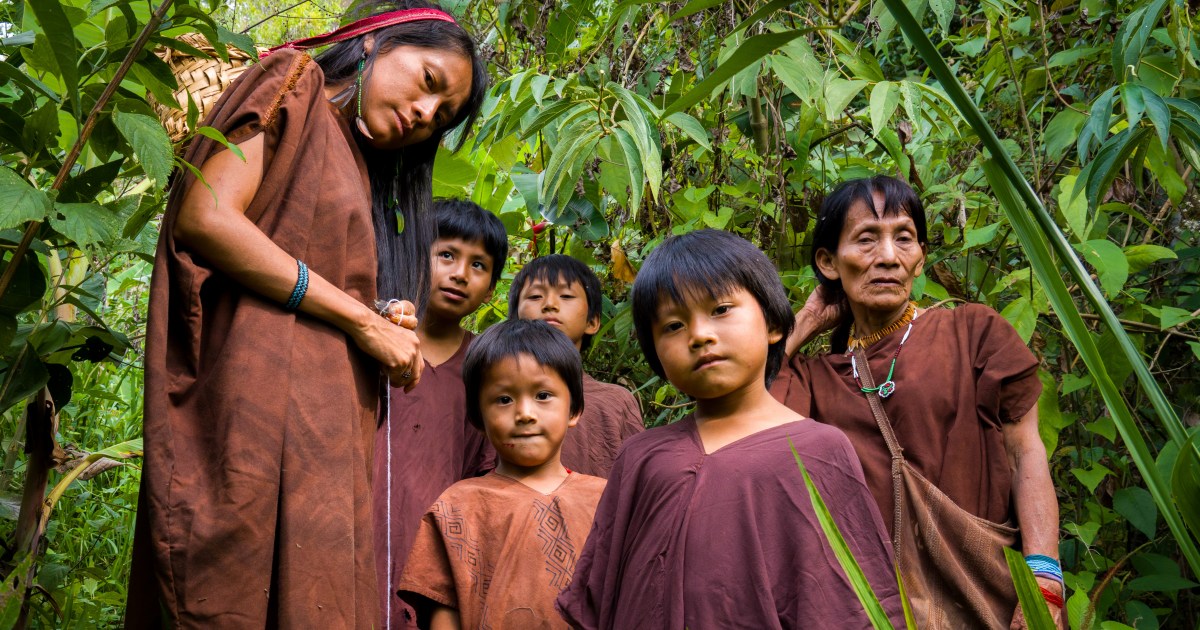San Miguel Centro Marankiari, Peru – From high atop a treeless ridge, Tsitsiri Samaniego can see his ancestral homeland stretching towards the horizon.
Samaniego, 40, is the leader of San Miguel Centro Marankiari, an Indigenous Ashaninka village cradled in the mountains of central Peru. Here, the Amazon rainforest blends into the Andean mountains, turning the rugged slopes to a lush blue-green.
But as he shields his eyes from the blistering sun, Samaniego detects signs of distress in the landscape.
Farmland has supplanted forests. The Perene River that snakes through the valley below has become contaminated, as towns and farms dump agricultural waste and sewage into its waters. Even the village’s cassava crops are blighted, with yellow lesions swelling on their leaves.
The scale of the environmental degradation has brought Samaniego to this high ridge in search of advice — from his ancestors, from the dead.
Pressing further up the incline, Samaniego arrives at a cemetery shrouded in a thicket of green. There, he pauses before an unmarked grave: that of his grandfather, Miguel Samaniego. The village of San Miguel Centro Marankiari still bears the late leader’s name.
Samaniego lays an offering of coca leaves on Miguel’s grave. Then, he lights a pipe to blow plumes of tobacco smoke over the headstone in a ritual blessing.
“This is where the spirits of our ancestors rest. They led the fight for our territory,” says Samaniego, following a moment of prayer. “When I come here, it gives me strength and courage.”
But facing the twin threats of development and climate change, Samaniego has steeled himself to a bitter reality: His ancestral land is no longer providing for his people. The land of his forefathers may not be the land of his descendants.


